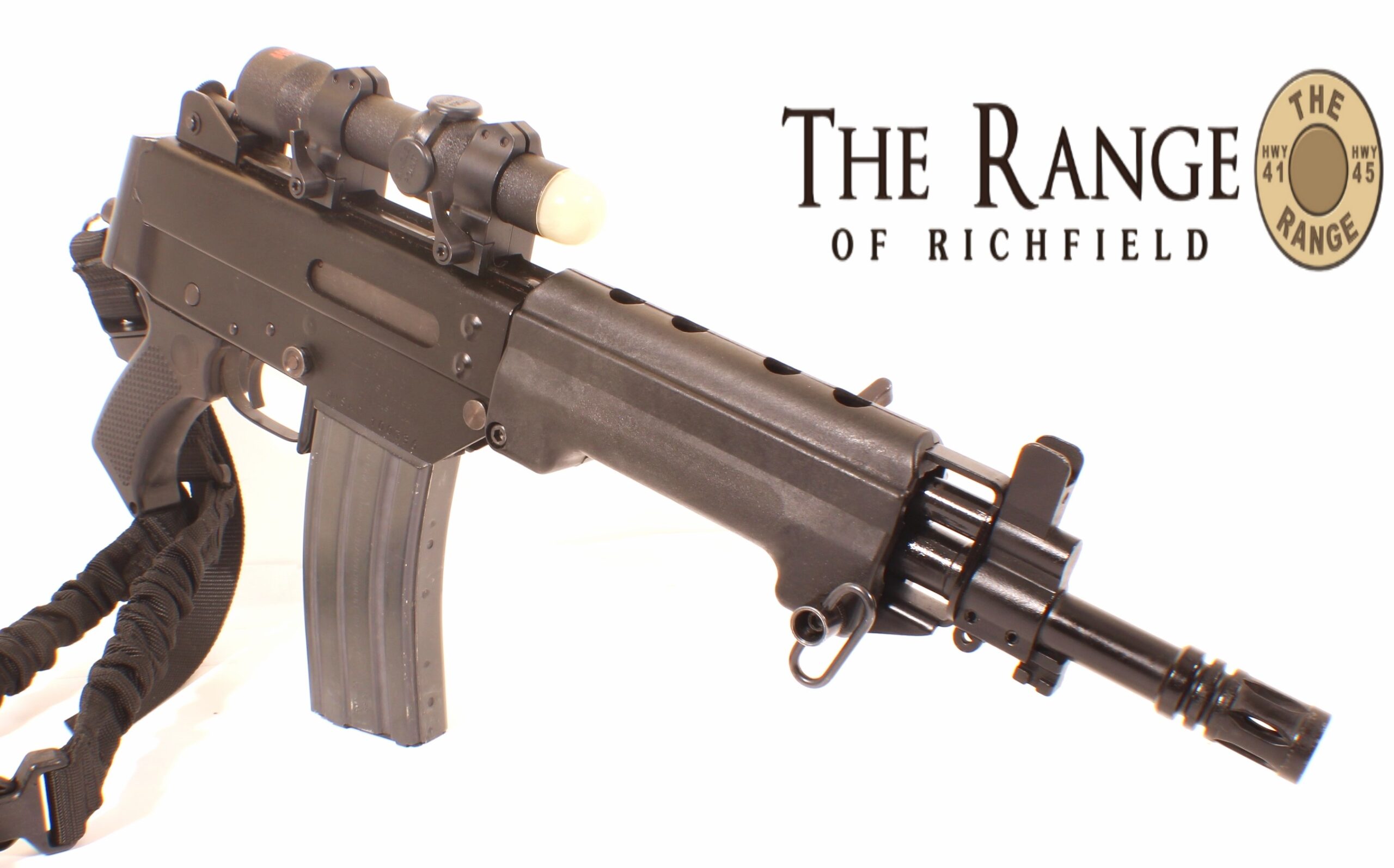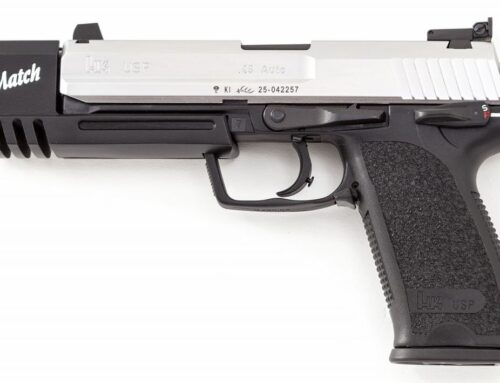With only around 700 examples imported into the country, the SAP is quite a rarity with some interesting history. The design dates back to 1978 when Australian arms manufacturer “Leader Dynamics” was attempting to create a new service rifle for the Australian military. At the time the Steyr AUG was selected and the rifle was abandoned with about 2,000 examples making it into the United States.
In 1983 the patents ended up in the hands of Australian Automatic Arms where some of the earlier design issues had been ironed out of the platform. Under the new AAA banner four different models had been offered. The SAR which was a standard 16″ barreled rifle, the SAC with a 10.5″ barrel and stock, the SP-20 which had a 20″ barrel and wooden furniture marketed as a sporter rifle, and this little rascal, the SAP. Production of all models ended in 1996 with new restrictions going into effect in Australia.
Dubbed the “Tasmanian Devil,” the SAP is simply an SAC model with a sling and no stock. With no need for a buffer tube the SAP is a very compact rifle caliber handgun which looks and feels as though it’s built like a tank. Construction is solid steel with black polymer furniture and a polymer sling end cap and you can certainly feel the heft when you pick one up. The barrel may be short but it has a heavy profile with a birdcage flash hider threaded onto the end.
Operation is what Leader called a “self cleaning” short stroke gas piston without any need for a regulator. This is paired with an AR-18 style tri-lug rotating bolt running on twin recoil springs and guide rods, curiously almost identical to what the Steyr AUG uses. From a performance standpoint the bolt glides like it’s on ball bearings, these actions don’t get much more smooth. A non-reciprocating charging handle is located on the left of the handguard similar to where you’d find one on an HK 91 or SP5, however the SAP’s locks open by turning it down rather than up. The “HK Slap” kind of works here, you just have to come at it from underneath.
The trigger feels like a typical GI AR-15 and at first glance happened to look just like one as well. It feeds from common AR-15 STANAG magazines with an AR safety selector and an AR-like button magazine release. While the release itself is very easy to actuate, aluminum GI magazines fit quite snug and will need to be pulled free while reloading.
The pistol grip of the Leader/AAA series have always looked rather peculiar to me and are immediately recognizable but they are surprisingly comfortable in the hand. Lack of a stock or brace aside, the controls and handling were quite good.
Up top the iron sights are somewhat peculiar with a windage adjustable dial aperture in the back marked 100, 200, and 300 while the elevation adjustable front sight post appears more like an inverted triangle than the dowel profile of an AR. I didn’t get a chance to check the sight picture because my example went Maximum 80’s and had its own optic.
The precursor to modern red dot sights is a curious device called an “occluded sight.” At first glance it sure looks like a small scope or a large red dot but you don’t really look through the tube like we’re accustomed to since it’s opaque. The idea is that outside light gets collected to illuminate a single broad dot within the tube, much like an enclosed fiber optic sight, which is then superimposed over your sight picture when you shoot with both eyes open. It’s really weird but works surprisingly well so long as you have enough ambient light to work with. At an indoor range I could barely see anything but when light increased this “Single Point” branded optic gave me a bright crisp green dot to work with.
The sight itself mounts onto a rail welded onto the top of the SAP’s receiver but it’s not a rail like we’re familiar with. Unlike a Weaver or Picatinny there are no cross notches to keep sight rings from sliding around. It’s much more like a dovetail but has a completely different footprint from the dovetail mounts we find today on air rifles and some .22’s.
Disassembly of these firearms is incredibly simple. A tab at the top back of the receiver gets pressed toward the rear sight base then the upper and lower receivers unhinge like an AR-15. The bolt assembly, recoil springs, guide rods and buffer are all one contained unit which effortlessly slides out of the upper. If you want to go a little further the upper and lower can be separated by a non-captive roll pin, leaving you with all of four parts after disassembly. That’s it!
I was fortunate enough to put a few rounds through this example and the only awkward moment was figuring out how to hold it. The sling was too large for me to put forward tension on so I simply brought up both hands and went for it. Between the ultra-smooth action and the inherent weight in this design recoil was entirely pleasant. The trigger pull is set up as more of a defensive or combat pull weight than match grade but it felt appropriate for the style of firearm and I’ve sure felt worse out of factory AR’s. Despite not being braced it cycled without any trouble.
Not only are these interesting pieces of history and very uncommon to come across, this exact model complete with occluded sight will be posted through the Range of Richfield on Gunbroker at some point soon. This example is incredibly clean with no major wear or tear, zero rust, and likely with very few rounds through the bore.








